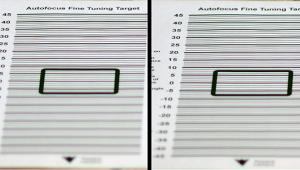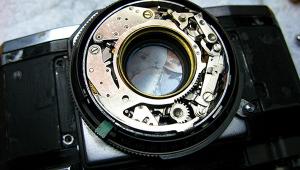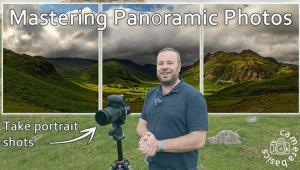Lens Tips: How to Find Your Lens' Sweet Spot

It’s a commandment brought down from the mountain: spend less on the camera if necessary, but don’t skimp on the lenses.
Most photographers will nod their noggins in agreement. Definitely buy the best glass possible. If you’re like me, you’ve amassed a shelf full of optics whose collective value exceeds the cost of a year at Stanford.
OK, maybe that’s not even remotely true. But still, good lenses are a long-term investment. And most of the lenses made today are good.
It wasn’t always so. The first photo cameras, built early in the 19th century, were outfitted with a simple meniscus optic. These one-element lenses weren’t very sharp and didn’t do well at short distances. They also suffered from color fringing. That may sound unimportant given that color emulsions didn’t exist, but, in fact, fringing interfered with focusing.
By 1840, better multi-element camera lenses were being sold, and after World War II seriously sharp lenses became commonplace. Today’s lens designers—with the aid of computers—craft optics no one would have imagined a half-century ago. Today’s impressive, all-purpose zooms sport up to 20 elements, and often rival fixed-focus lenses in performance.
But why are all those hunks of glass necessary? In high school, you might have studied geometric optics, where all lenses are idealized. But the real world is less than perfect: glass lenses are not infinitely thin, and they treat different colors…differently. Also, thanks to the wave-like nature of light, there are diffraction effects that come into play at small f-stops, compromising resolution.
An honest discussion of lens design would be like explaining organic chemistry—complex and endless. Just enumerating optical defects is both depressing and a Greek lesson: astigmatism, coma, chromatic aberration, spherical aberration, and…more. Consequently, reviews of new lenses will often retreat behind opaque lab results or qualitative statements such as “pleasingly sharp.”
So, in the spirit of after-dinner science, let’s consider one lens attribute you can easily check out for yourself: an optic’s “sweet spot.”
That’s the f-stop range where resolution is best. Most lenses are not very sharp wide open, so stopping down usually helps. But if you stop down too much, diffraction becomes noticeable. The sweet spot is somewhere in the middle, when image detail is greatest.
So where is that? The sweet spot is usually said to be a few stops down from wide open. Well, what’s “a few,” and at what aperture does diffraction cause the sweetness to sour?
Wanting to know, I set up my Nikon D800 in the garage with a few printouts of a test chart taped to the wall. Then I fired away with my go-to lens, a Nikkor 24-70mm f/2.8 ED zoom.
Examining the pix under enlargement resulted in the accompanying graph. I checked the resolution both in the center of the field and in one of the corners.
The results of my tests were modestly surprising. Resolution in the center with the lens wide open was just about as good as two stops down. Corner resolution wide open (and mind you, there was some obvious astigmatism that I ignored) was only 80% that of the center, and only got better at f/8. The best resolution overall was not “a few stops down” from wide open, but a hefty four stops. And at five stops, the sweetness ended as diffraction reared its fuzzy head. My sweet spot was small.
Instructive. I encourage you to do some tests yourself. It’s a good use of a few hours.
Mind you, sharpness isn’t everything. Consider the original picture makers—artists. The Dutch master Jan Steen, working in the mid-1600s, would surely qualify for membership in Ansel Adams’s Group f/64. His canvases were scalpel sharp, from here to infinity. But then there was Impressionist Claude Monet, whose paintings suggest a habit of dipping his spectacles in Vaseline. Even so, an 1891 Monet of a bigly blurred haystack recently fetched $81 million at auction.
Nope, not even Adams would say that sharpness is everything. He once quipped that “there’s nothing worse than a sharp image of a fuzzy concept.” But there is something worse: a fuzzy image of a sharp concept.
Seth Shostak is an astronomer at the SETI Institute who thinks photography is one of humanity’s greatest inventions. His photos have been used in countless magazines and newspapers, and he occasionally tries to impress folks by noting that he built his first darkroom at age 11. You can find him on both Facebook and Twitter.

















































